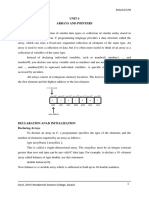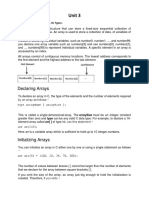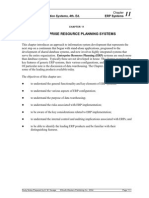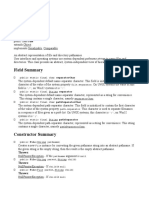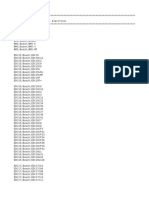0% found this document useful (0 votes)
8 views30 pagesLecture Slide 08 - Array
The document provides an overview of arrays in C, detailing their properties, advantages, disadvantages, and types, including one-dimensional, two-dimensional, and multi-dimensional arrays. It includes syntax for declaring and initializing arrays, accessing elements, and traversing arrays using loops. Additionally, it covers the initialization and access methods for two-dimensional and three-dimensional arrays, along with examples of C programs demonstrating these concepts.
Uploaded by
arifhasanCopyright
© © All Rights Reserved
We take content rights seriously. If you suspect this is your content, claim it here.
Available Formats
Download as PPT, PDF, TXT or read online on Scribd
0% found this document useful (0 votes)
8 views30 pagesLecture Slide 08 - Array
The document provides an overview of arrays in C, detailing their properties, advantages, disadvantages, and types, including one-dimensional, two-dimensional, and multi-dimensional arrays. It includes syntax for declaring and initializing arrays, accessing elements, and traversing arrays using loops. Additionally, it covers the initialization and access methods for two-dimensional and three-dimensional arrays, along with examples of C programs demonstrating these concepts.
Uploaded by
arifhasanCopyright
© © All Rights Reserved
We take content rights seriously. If you suspect this is your content, claim it here.
Available Formats
Download as PPT, PDF, TXT or read online on Scribd
/ 30






























